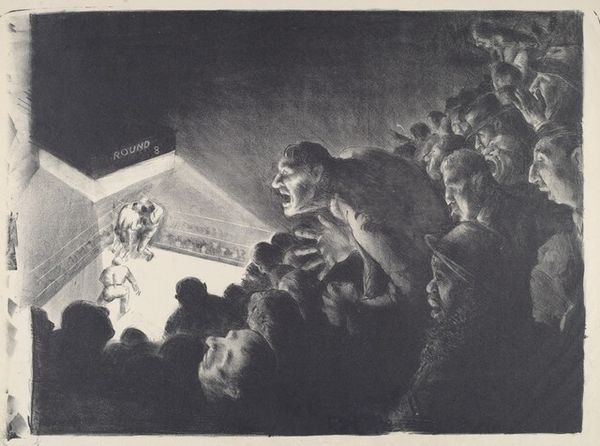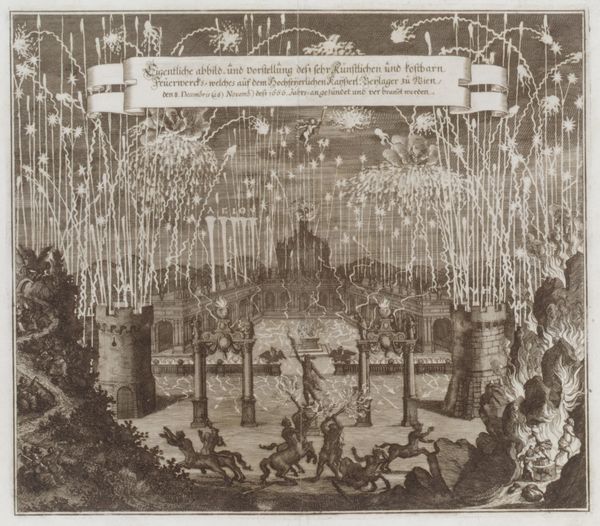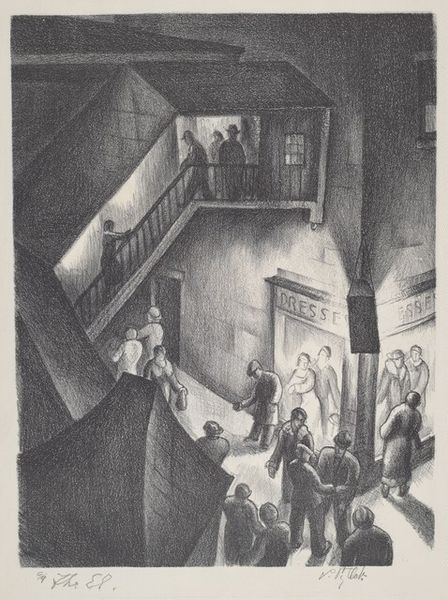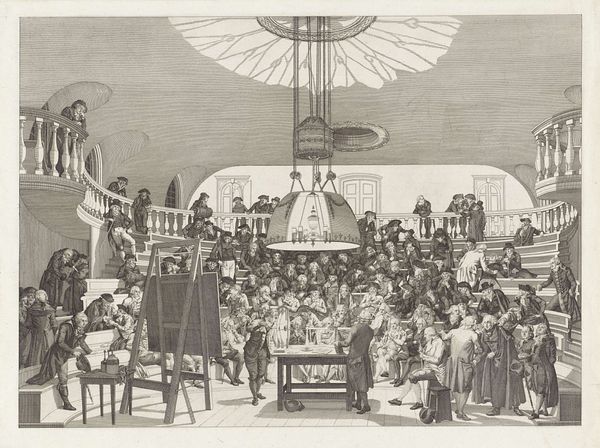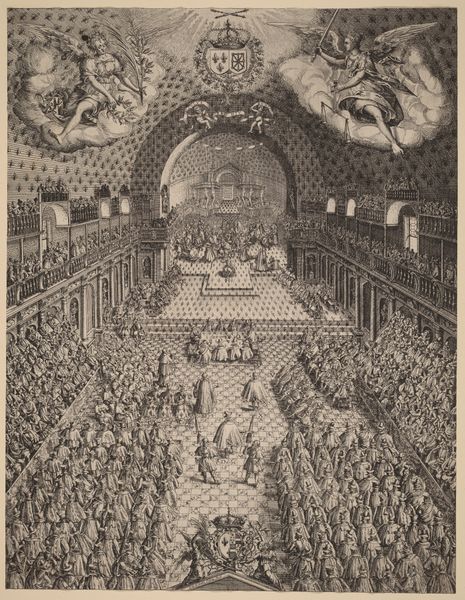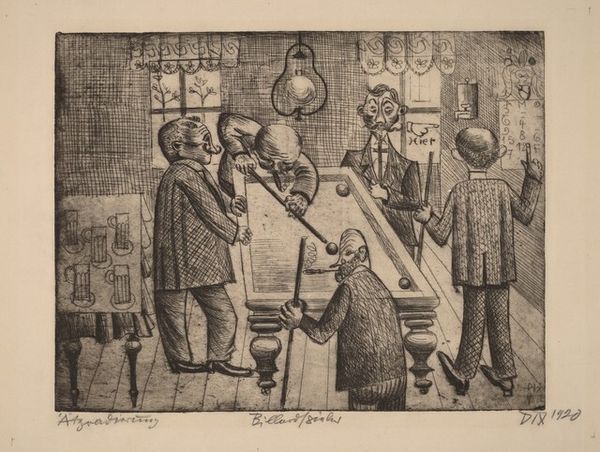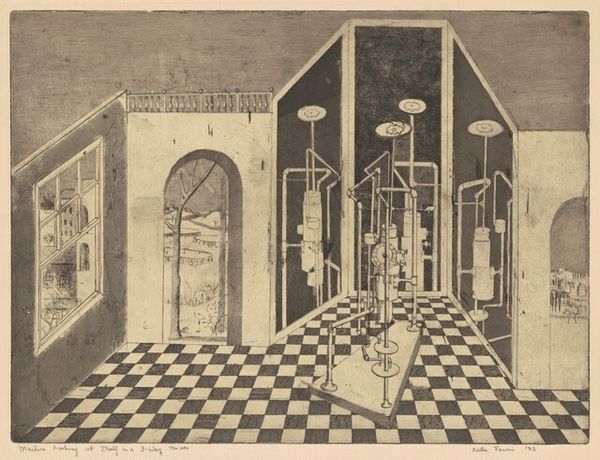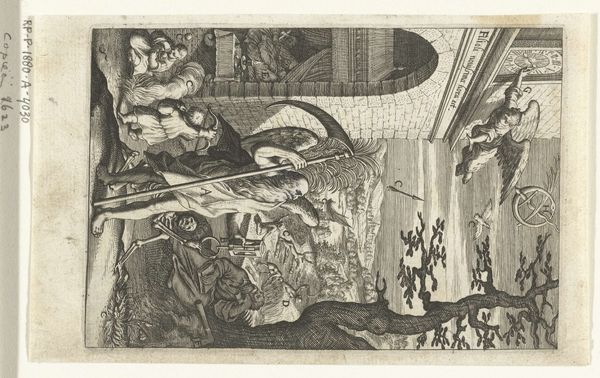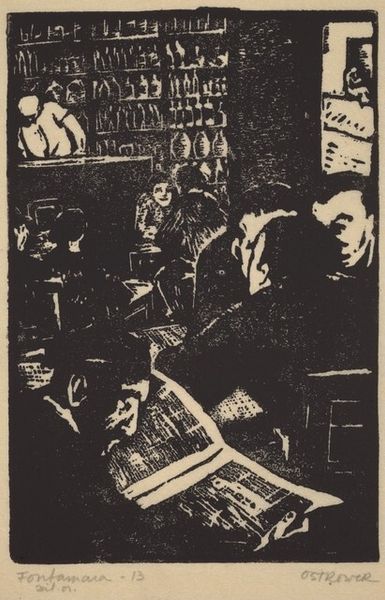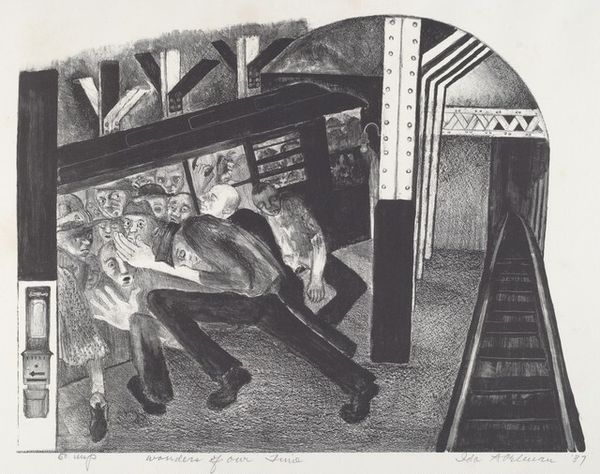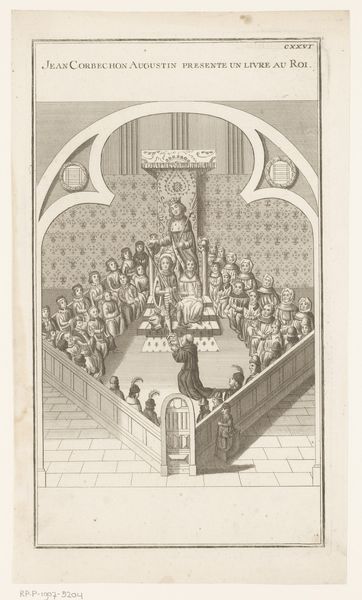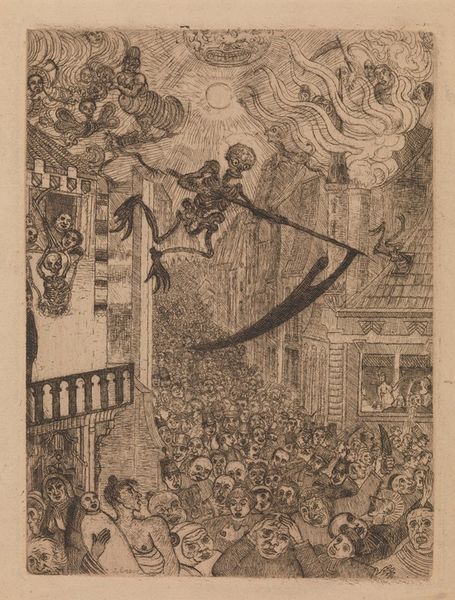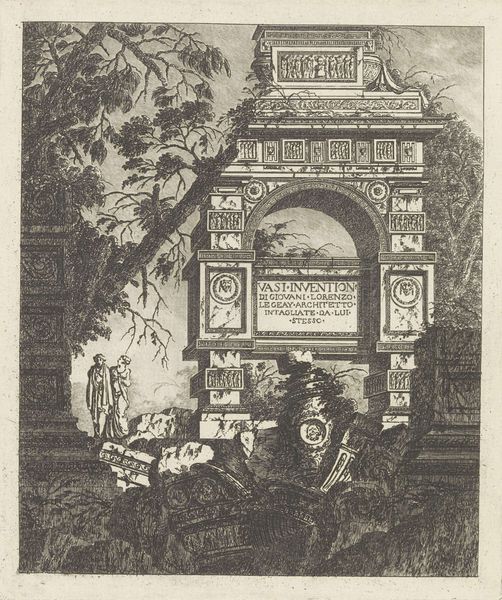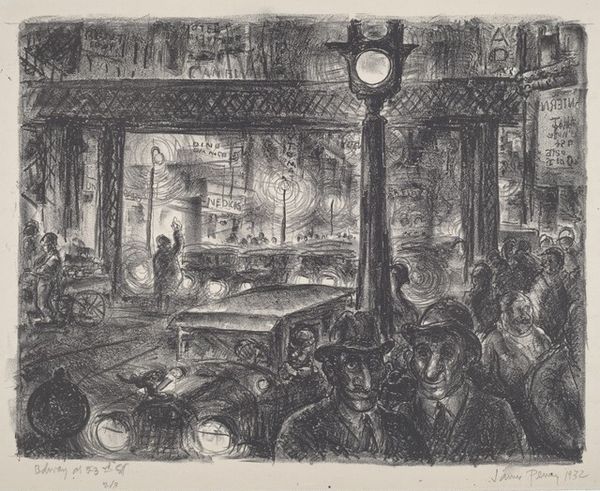
drawing, graphic-art, print, etching, ink, pen
#
drawing
#
graphic-art
#
pen drawing
# print
#
etching
#
ink
#
pen
#
cityscape
#
genre-painting
#
realism
Dimensions: image: 254 x 356 mm paper: 318 x 483 mm
Copyright: National Gallery of Art: CC0 1.0
Curator: Jerry Bywaters created this etching, ink, and pen drawing, entitled "Opera at Popular Prices," in 1936. It depicts a crowd watching an opera performance in what seems like an older theater. What’s your first impression? Editor: My first impression is the incredible detail and energy. The cross-hatching, especially in the depiction of the crowd, creates a buzz, a feeling of being right there in the audience. The sheer number of ceiling fans also makes a statement—how sweltering was it in that theater? Curator: Absolutely, let's delve deeper into the symbolism, as I see this scene as more than just a simple depiction of entertainment. Note how the central image of the performance is small and slightly obscured, and above the heads of the orchestra you see the banks of slowly revolving fans... Editor: Right, there's a stark contrast between the working class in the foreground, struggling through the heat, and the supposed high culture presented on stage. This is achieved using modest materials like ink on paper. Etchings allowed for reproduction and wider accessibility, playing into the title, "Opera at Popular Prices." Bywaters is directly engaging with questions of labor, class, and consumption of culture. The very technique mirrors his content. Curator: It's intriguing how Bywaters uses those ever-present fans as more than functional objects. Hanging lamps and ceiling fans dominate the space. They become almost watchful presences or even represent a passage of time. They could even speak to the relationship between audience and performance. Does the breeze carry inspiration, boredom, or perhaps something else entirely? The repeated fan motif feels pregnant with meaning beyond simple relief from the heat. The opera itself recedes into the background. Editor: Precisely! By rendering it indistinct, Bywaters makes a very powerful assertion that this performance isn't about artistic innovation. The opera is made accessible, the work highlights both cultural experience and material reality. Curator: I agree entirely. It's about the act of witnessing and participating in cultural production, especially by those often excluded. Editor: It leaves you considering questions around how we manufacture both art and its accessibility in this piece. The choice of rendering makes us think and explore these themes more explicitly than we might expect. Curator: A thought-provoking piece, indeed, and one that prompts further consideration about cultural exchange, memory, and representation, even today. Editor: The means, manner and themes behind its making make the message of this work all the more compelling.
Comments
No comments
Be the first to comment and join the conversation on the ultimate creative platform.
